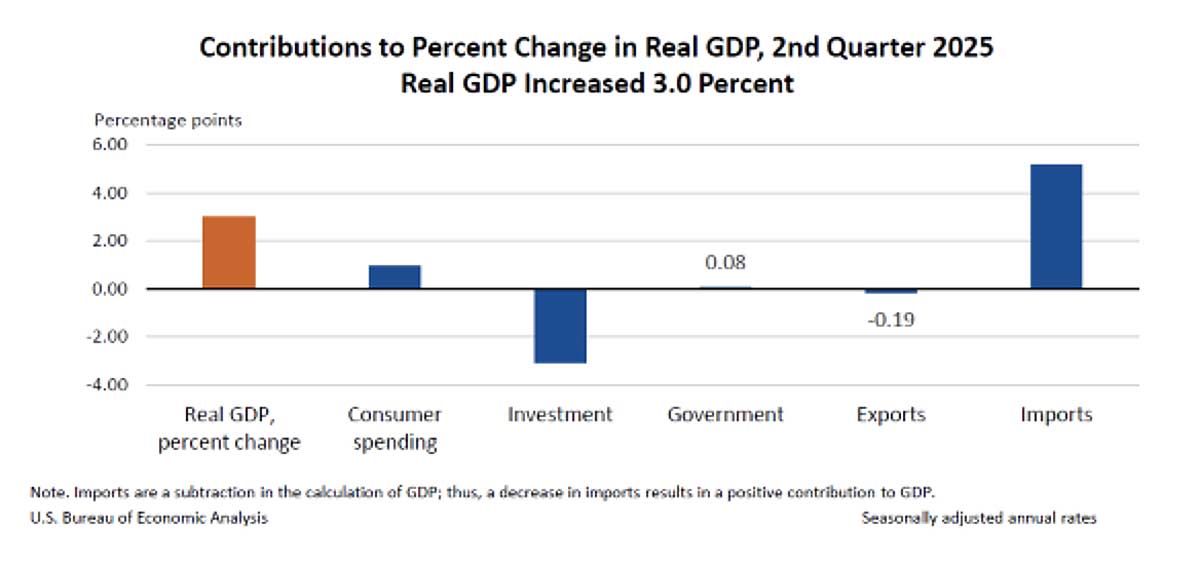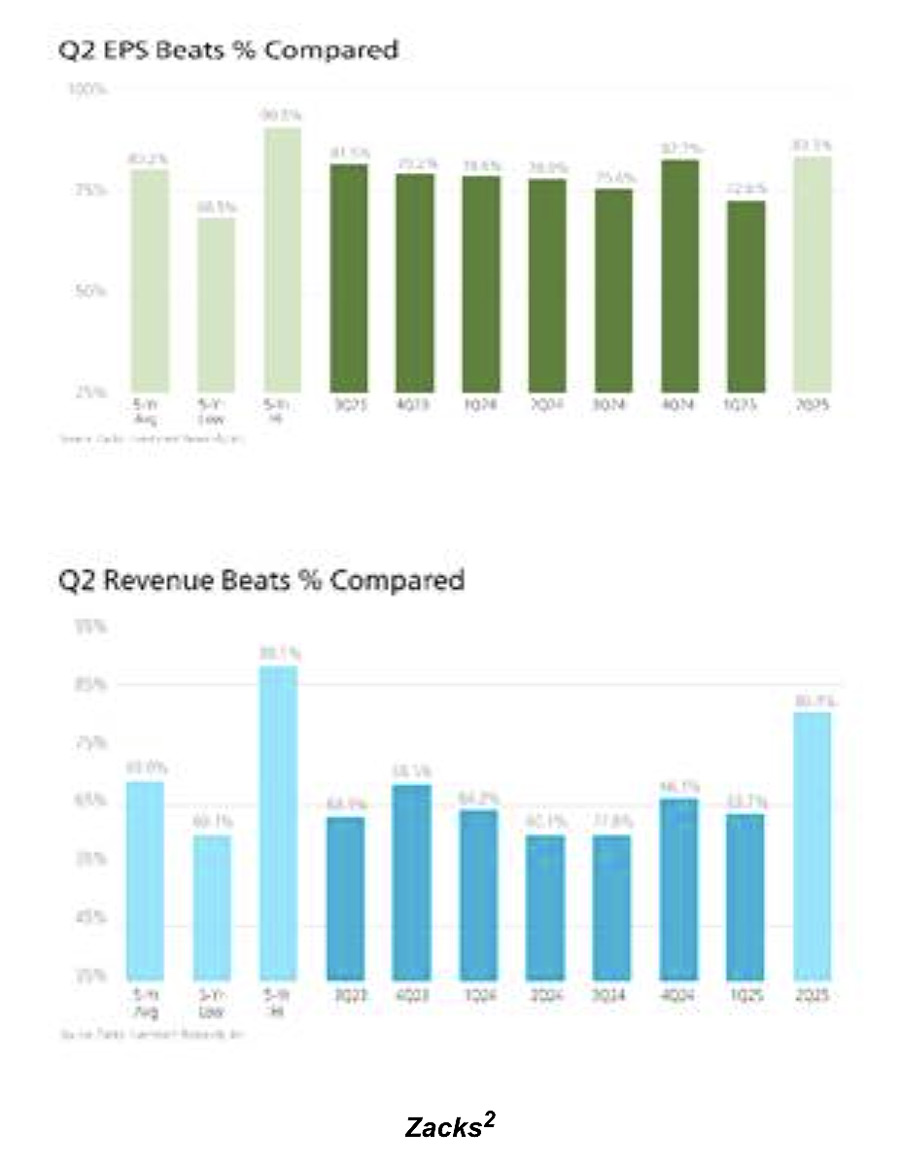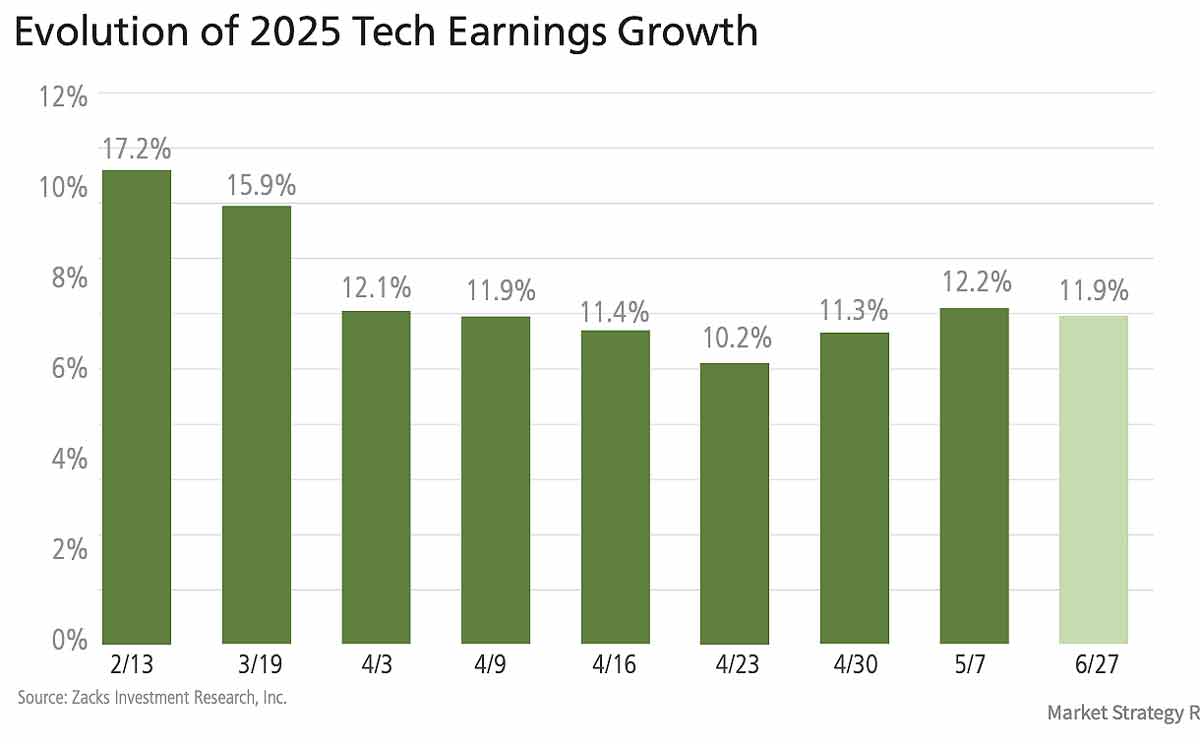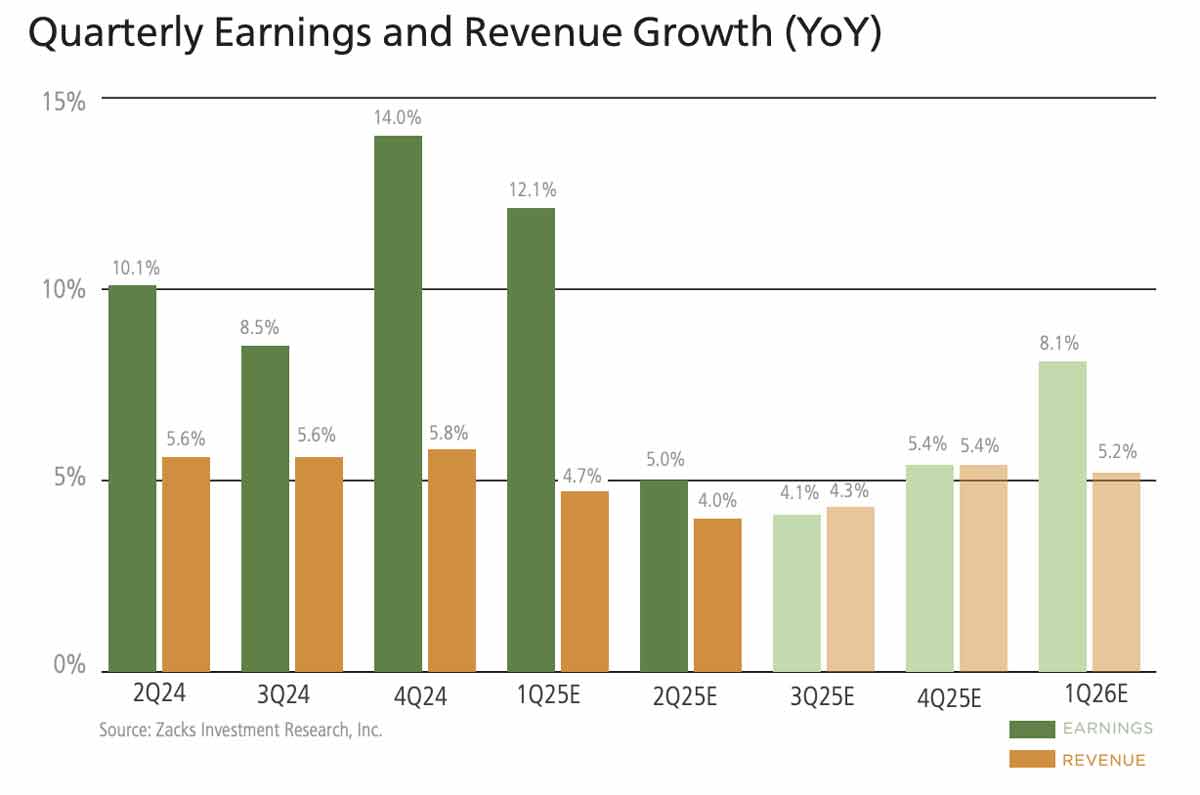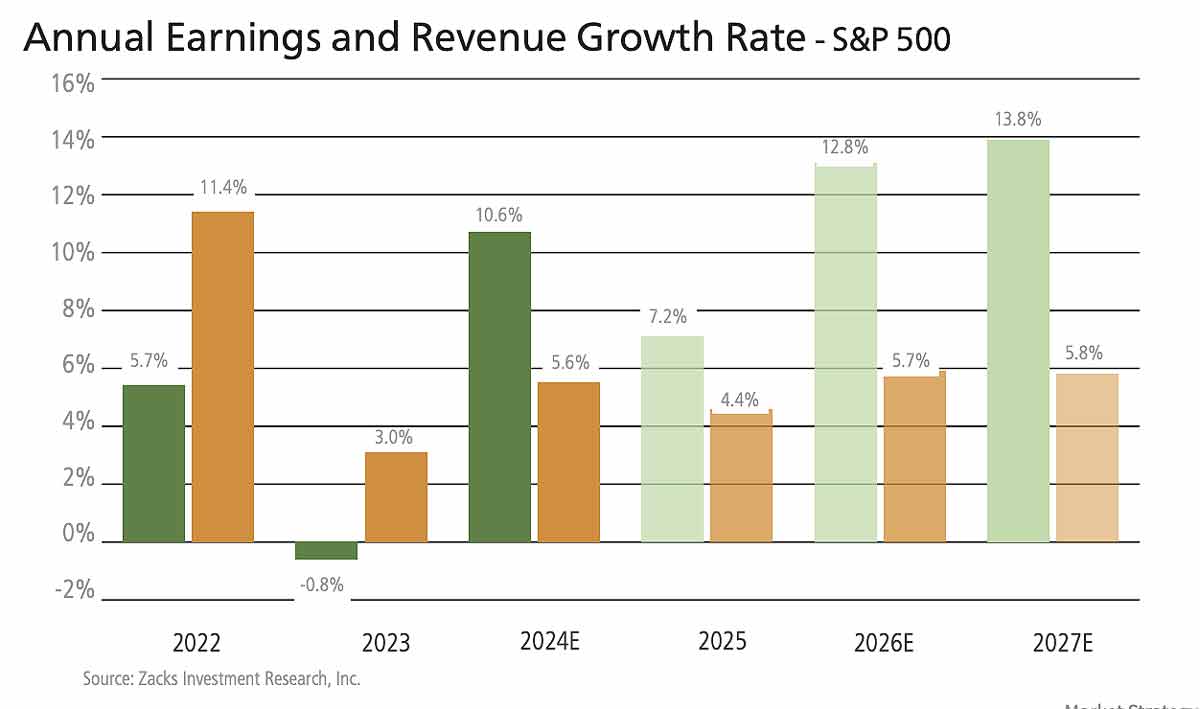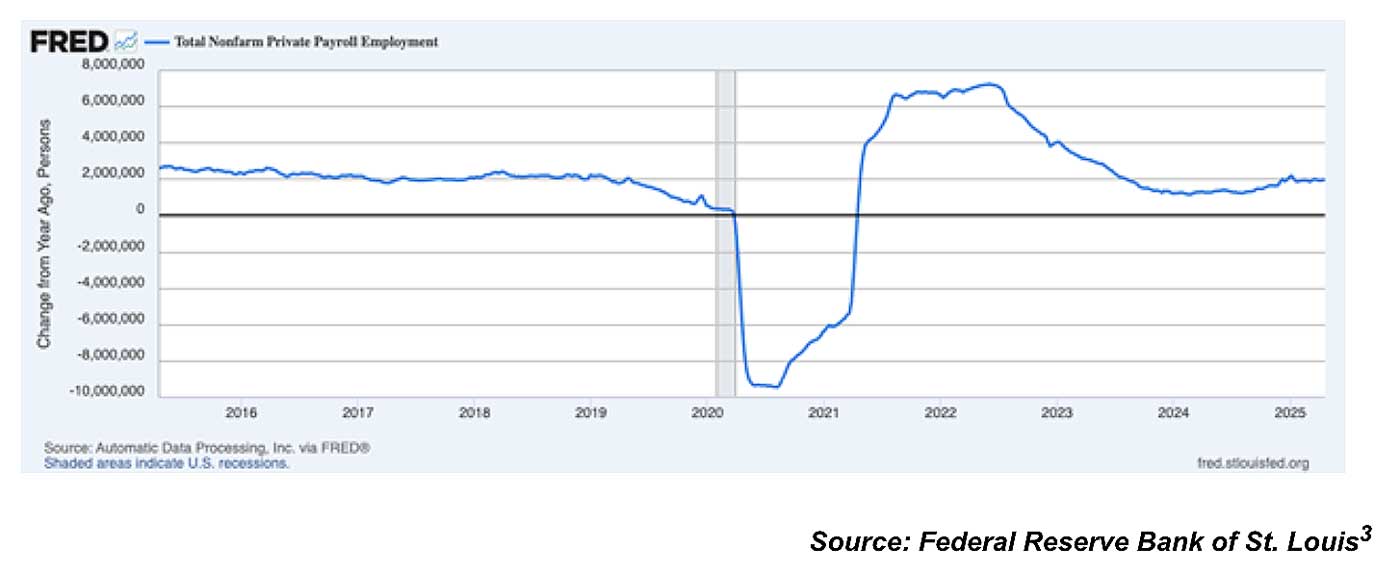
The financial media and many in the investor community are eyeing the Fed’s September meeting with bated breath. I’m already looking past it.
At this stage, markets are pricing in a 100% probability of a 25-basis-point cut, with a very small chance of a larger 50-point move. As I’ve written many times before, markets move on surprises, not widely known information. When it comes to the upcoming Fed decision, the surprise factor is essentially nil. The Fed has been telegraphing its thinking pretty clearly for weeks.1
Rate cuts make for dramatic headlines, but in practice, they rarely alter the trend already in motion. When the Fed started cutting rates in January 2001 (nearly a year into the dot-com bust), stocks fell another 40% before finally bottoming in 2002. When the Fed cut rates in September 2007, the S&P 500 peaked just a few weeks later. The Global Financial Crisis followed. On both occasions, the cuts were real-time responses to worsening conditions, not tools that fundamentally changed the direction of the cycle.
Some may offer the counter-argument that Fed cuts in 1974 and 1990 were followed by powerful and lasting stock market rallies. But in those years, the Fed began cutting just months after bear markets had already bottomed. I would argue that stocks rebounded not because of the policy shift, but because the cuts happened to coincide with the early months of a new bull market. The rally was driven by positive forward-looking economic fundamentals and the anticipation of an earnings rebound, not by the central bank.
I want to be fair here, however, in acknowledging that rate cut cycles tend to be good for stocks on a forward-looking basis. On average, the S&P 500 has done reasonably well after initial cuts: about 7% forward returns over six months and roughly 12% over 12 months. But investors should not take these averages to mean that the rate cuts are the catalysts for strong returns. The cuts themselves aren’t the deciding factor—the economic and earnings cycles are. Rate cuts help, but they don’t drive.
We saw the opposite play out in 2022. For months, Fed officials downplayed the need to raise rates as inflation accelerated. Remember the “inflation is transitory” narrative? When the Fed reversed course in March and began aggressive hikes, the sudden shift was a surprise, jolting investor sentiment. It wasn’t the hikes themselves that drove the bear market—it was the abrupt change in expectations, i.e. the negative surprise. We don’t have that today.
In the current environment, we largely see a resilient U.S. economy, even as some signs of slowing are starting to show. In this economic environment, a 25-basis-point cut may steepen the yield curve slightly and marginally encourage lending. But the U.S. economy and credit creation have been holding up just fine with rates at current levels, where they’ve been since December 2022. I don’t think a widely telegraphed 25 basis point cut is going to make a major difference.
None of this is to say the direction of rates doesn’t matter. Over the long term, easier monetary policy can support growth at the margin, especially if it steepens the curve and helps banks lend. But investors should remember: The Fed is more often a follower than a leader. Cuts typically reflect conditions already visible in the data, not catalysts that create new ones.
Bottom Line for Investors
September’s rate cut will be a headline-grabber, but its pricing power on stocks is likely to be minimal, in my view. Markets already know it’s coming, and history shows Fed cuts don’t alter the prevailing trend. Investors should focus less on the drama of Fed decision day and more on the fundamentals—corporate earnings, consumer resilience, and global growth drivers. Those, not a single quarter-point move, are what shape long-term market returns.
1 Black Rock. April 25, 2025. https://advisor.zacksim.com/e/376582/tential-portfolio-implications/5thcyf/1303156704/h/QWWdKPoIzENSL0MPL39x8wdrkrkgan-gzxDrYJ_IcEM
DISCLOSURE
Past performance is no guarantee of future results. Inherent in any investment is the potential for loss.
Zacks Investment Management, Inc. is a wholly-owned subsidiary of Zacks Investment Research. Zacks Investment Management is an independent Registered Investment Advisory firm and acts as an investment manager for individuals and institutions. Zacks Investment Research is a provider of earnings data and other financial data to institutions and to individuals.
This material is being provided for informational purposes only and nothing herein constitutes investment, legal, accounting or tax advice, or a recommendation to buy, sell or hold a security. Do not act or rely upon the information and advice given in this publication without seeking the services of competent and professional legal, tax, or accounting counsel. Publication and distribution of this article is not intended to create, and the information contained herein does not constitute, an attorney-client relationship. No recommendation or advice is being given as to whether any investment or strategy is suitable for a particular investor. It should not be assumed that any investments in securities, companies, sectors or markets identified and described were or will be profitable. All information is current as of the date of herein and is subject to change without notice. Any views or opinions expressed may not reflect those of the firm as a whole.
Any projections, targets, or estimates in this report are forward looking statements and are based on the firm’s research, analysis, and assumptions. Due to rapidly changing market conditions and the complexity of investment decisions, supplemental information and other sources may be required to make informed investment decisions based on your individual investment objectives and suitability specifications. All expressions of opinions are subject to change without notice. Clients should seek financial advice regarding the appropriateness of investing in any security or investment strategy discussed in this presentation.
Certain economic and market information contained herein has been obtained from published sources prepared by other parties. Zacks Investment Management does not assume any responsibility for the accuracy or completeness of such information. Further, no third party has assumed responsibility for independently verifying the information contained herein and accordingly no such persons make any representations with respect to the accuracy, completeness or reasonableness of the information provided herein. Unless otherwise indicated, market analysis and conclusions are based upon opinions or assumptions that Zacks Investment Management considers to be reasonable. Any investment inherently involves a high degree of risk, beyond any specific risks discussed herein.
The S&P 500 Index is a well-known, unmanaged index of the prices of 500 large-company common stocks, mainly blue-chip stocks, selected by Standard & Poor’s. The S&P 500 Index assumes reinvestment of dividends but does not reflect advisory fees. The volatility of the benchmark may be materially different from the individual performance obtained by a specific investor. An investor cannot invest directly in an index.
The Russell 1000 Growth Index is a well-known, unmanaged index of the prices of 1000 large-company growth common stocks selected by Russell. The Russell 1000 Growth Index assumes reinvestment of dividends but does not reflect advisory fees. An investor cannot invest directly in an index. The volatility of the benchmark may be materially different from the individual performance obtained by a specific investor.
Nasdaq Composite Index is the market capitalization-weighted index of over 3,300 common equities listed on the Nasdaq stock exchange. The types of securities in the index include American depositary receipts, common stocks, real estate investment trusts (REITs) and tracking stocks, as well as limited partnership interests. The index includes all Nasdaq-listed stocks that are not derivatives, preferred shares, funds, exchange-traded funds (ETFs) or debenture securities. An investor cannot invest directly in an index. The volatility of the benchmark may be materially different from the individual performance obtained by a specific investor.
The Dow Jones Industrial Average measures the daily stock market movements of 30 U.S. publicly-traded companies listed on the NASDAQ or the New York Stock Exchange (NYSE). The 30 publicly-owned companies are considered leaders in the United States economy. An investor cannot directly invest in an index. The volatility of the benchmark may be materially different from the individual performance obtained by a specific investor.
The Bloomberg Global Aggregate Index is a flagship measure of global investment grade debt from twenty-four local currency markets. This multi-currency benchmark includes treasury, government-related, corporate and securitized fixed-rate bonds from both developed and emerging markets issuers. An investor cannot invest directly in an index. The volatility of the benchmark may be materially different from the individual performance obtained by a specific investor.
The ICE Exchange-Listed Fixed & Adjustable Rate Preferred Securities Index is a modified market capitalization weighted index composed of preferred stock and securities that are functionally equivalent to preferred stock including, but not limited to, depositary preferred securities, perpetual subordinated debt and certain securities issued by banks and other financial institutions that are eligible for capital treatment with respect to such instruments akin to that received for issuance of straight preferred stock. An investor cannot invest directly in an index. The volatility of the benchmark may be materially different from the individual performance obtained by a specific investor.
The MSCI ACWI ex U.S. Index captures large and mid-cap representation across 22 of 23 Developed Markets (DM) countries (excluding the United States) and 24 Emerging Markets (EM) countries. The index covers approximately 85% of the global equity opportunity set outside the U.S. An investor cannot invest directly in an index. The volatility of the benchmark may be materially different from the individual performance obtained by a specific investor.
The Russell 2000 Index is a well-known, unmanaged index of the prices of 2000 small-cap company common stocks, selected by Russell. The Russell 2000 Index assumes reinvestment of dividends but does not reflect advisory fees. An investor cannot invest directly in an index. The volatility of the benchmark may be materially different from the individual performance obtained by a specific investor.
The S&P Mid Cap 400 provides investors with a benchmark for mid-sized companies. The index, which is distinct from the large-cap S&P 500, is designed to measure the performance of 400 mid-sized companies, reflecting the distinctive risk and return characteristics of this market segment.
The S&P 500 Pure Value index is a style-concentrated index designed to track the performance of stocks that exhibit the strongest value characteristics by using a style-attractiveness-weighting scheme. An investor cannot directly invest in an index. The volatility of the benchmark may be materially different from the individual performance obtained by a specific investor.

